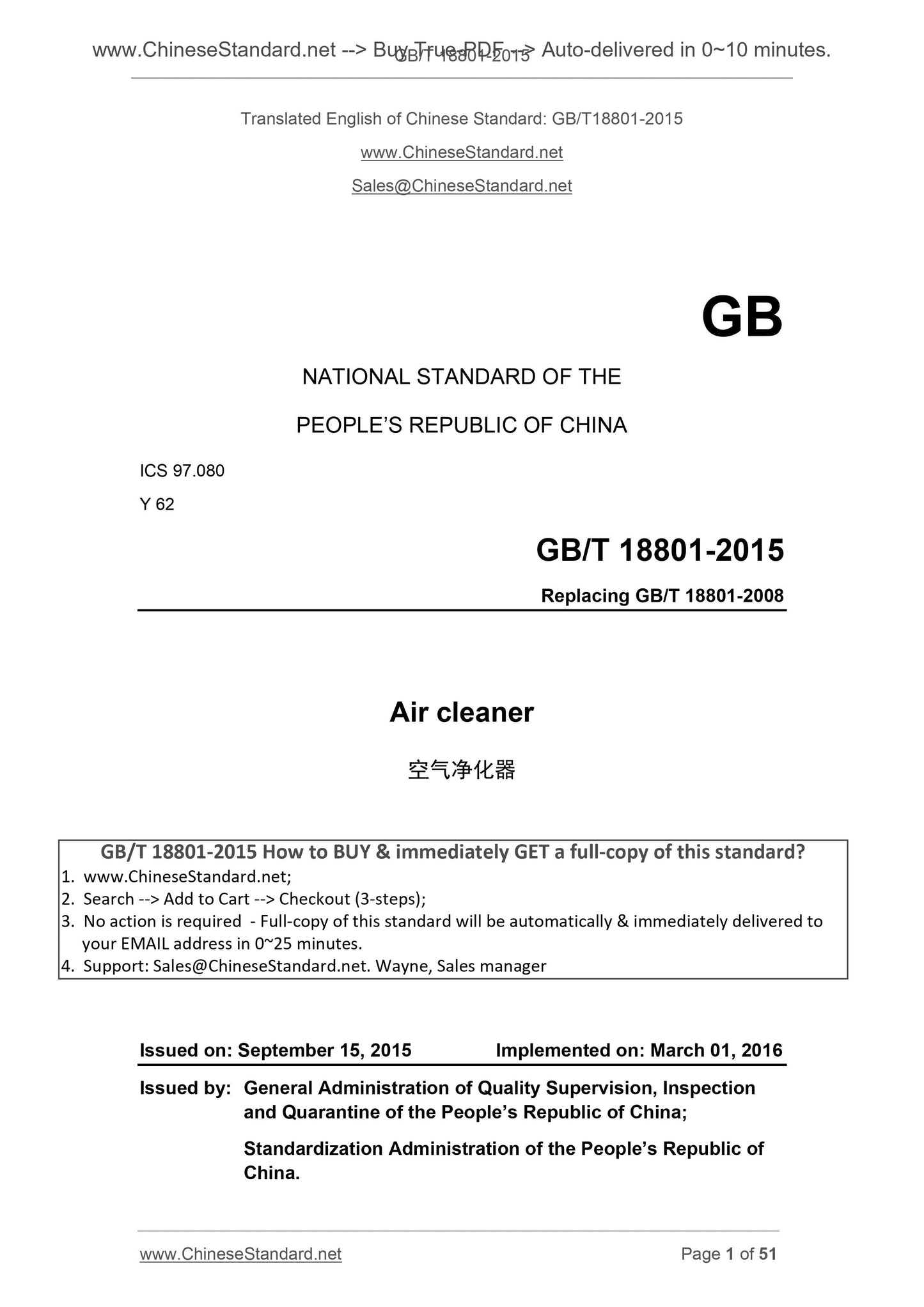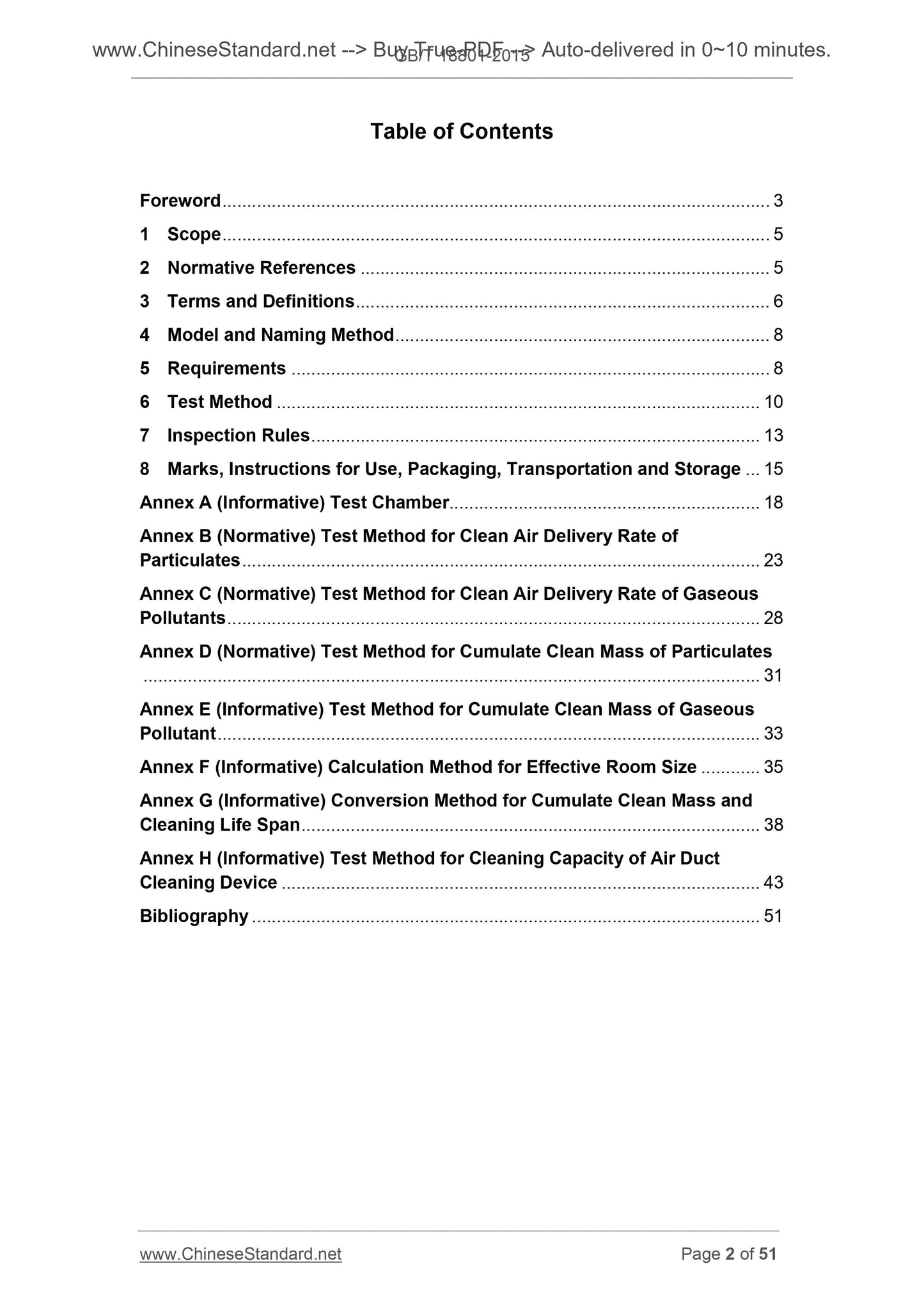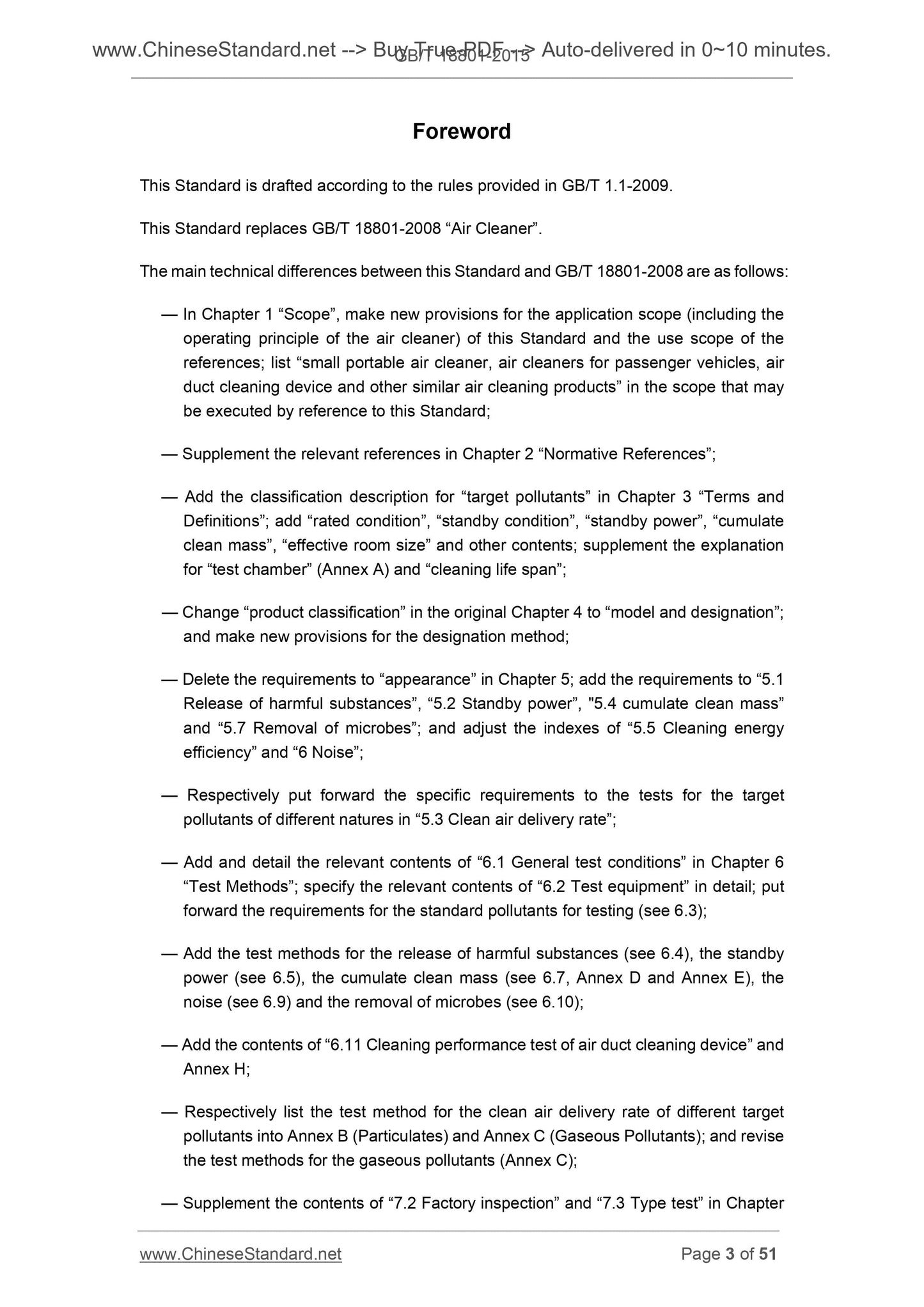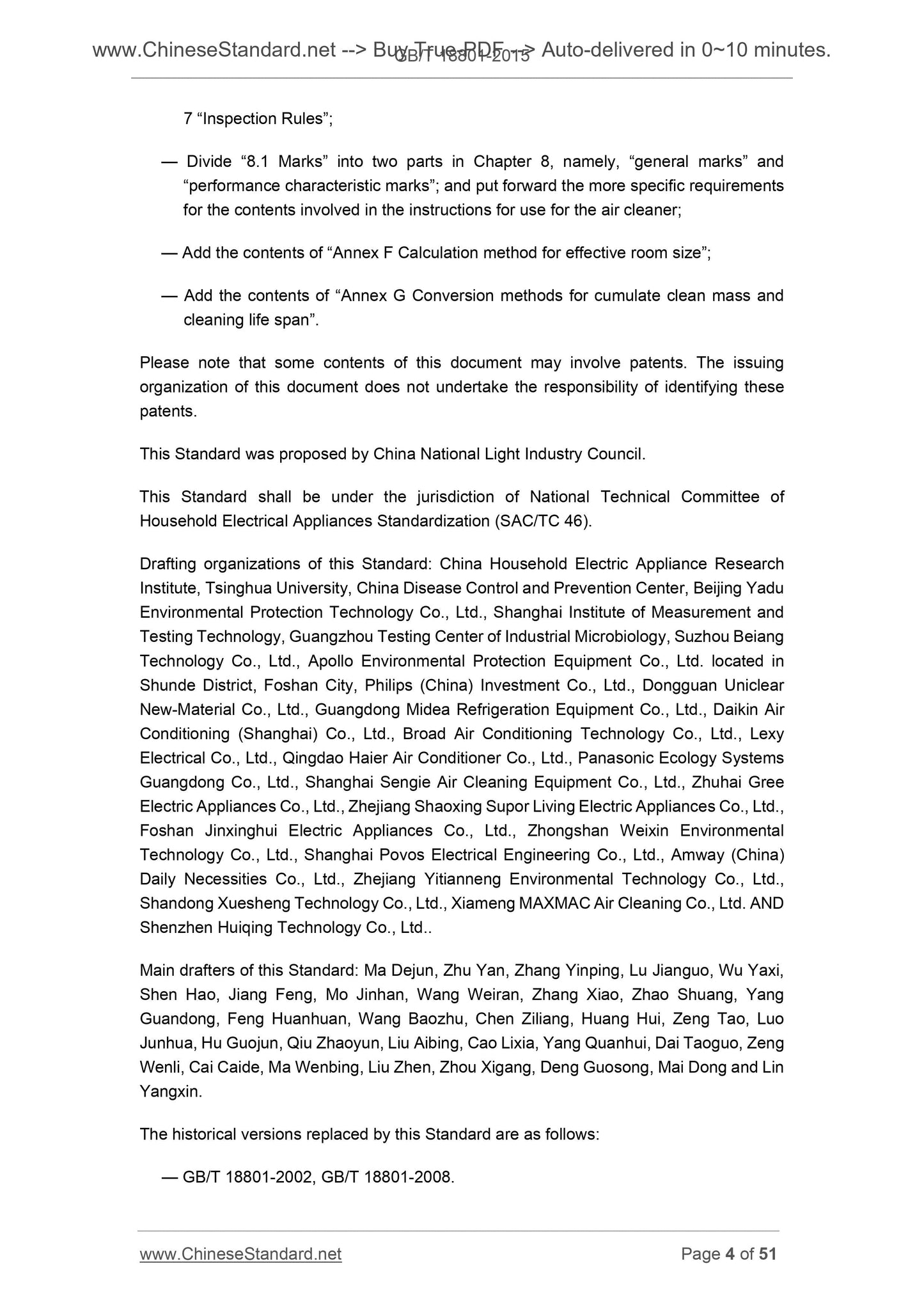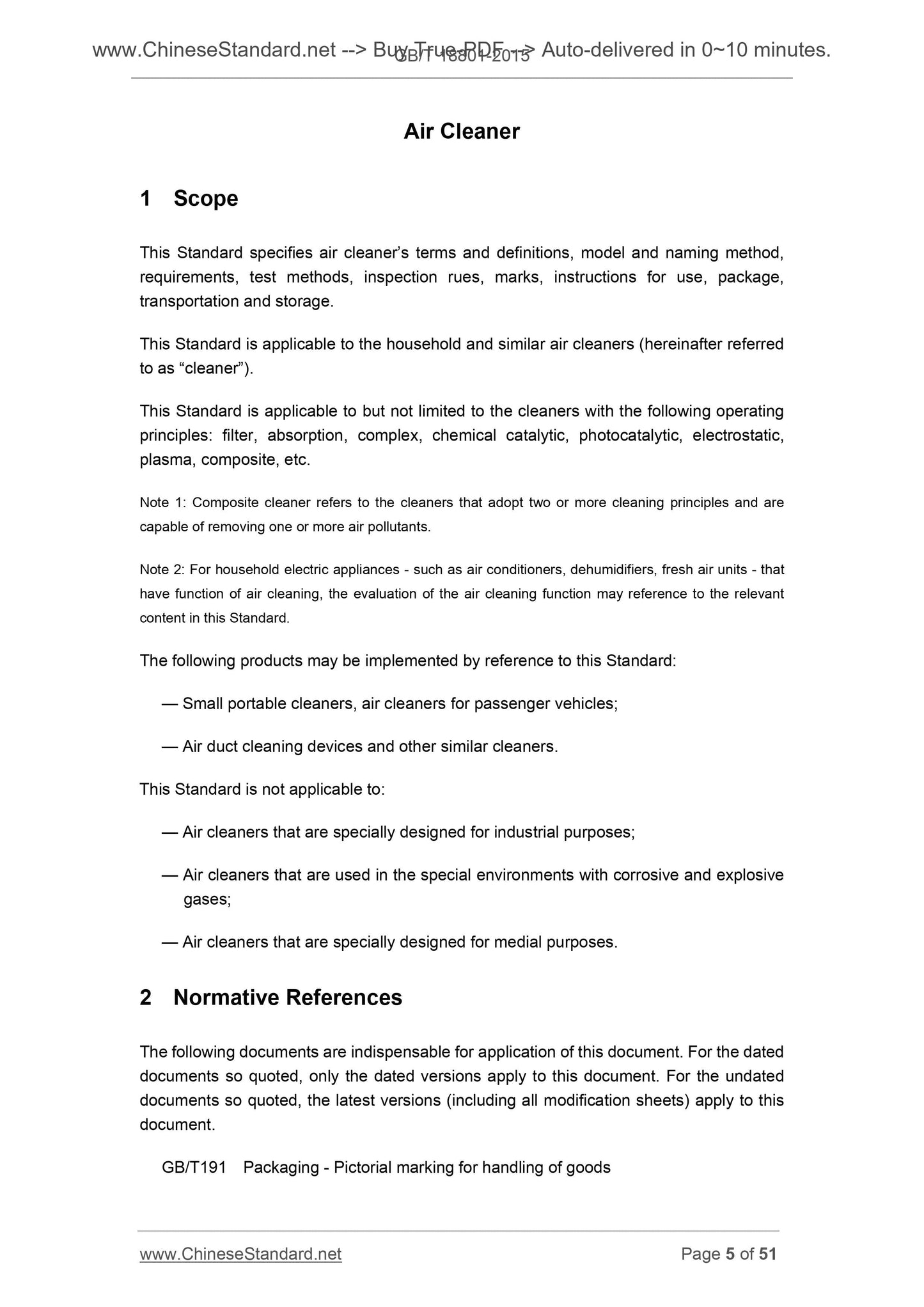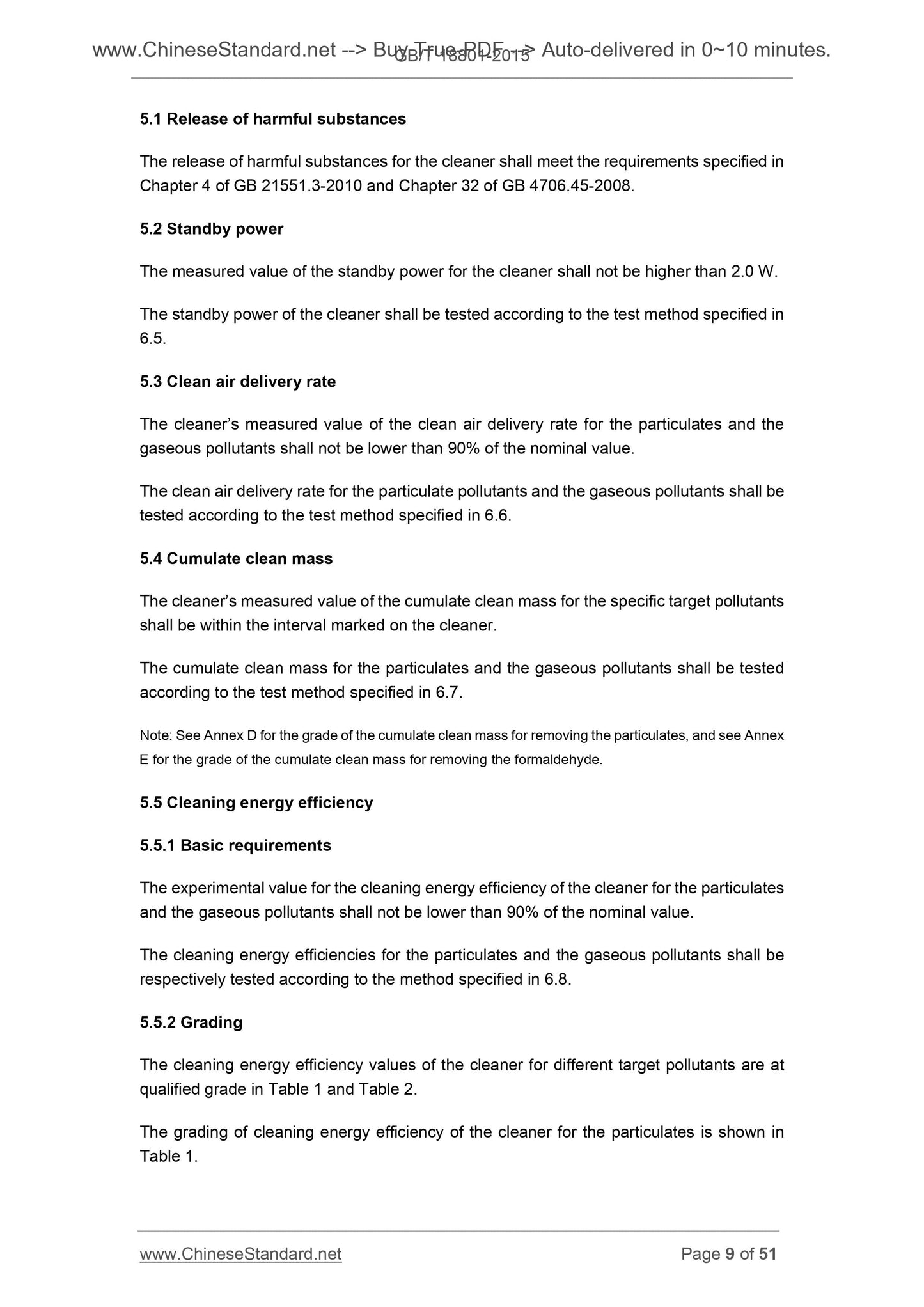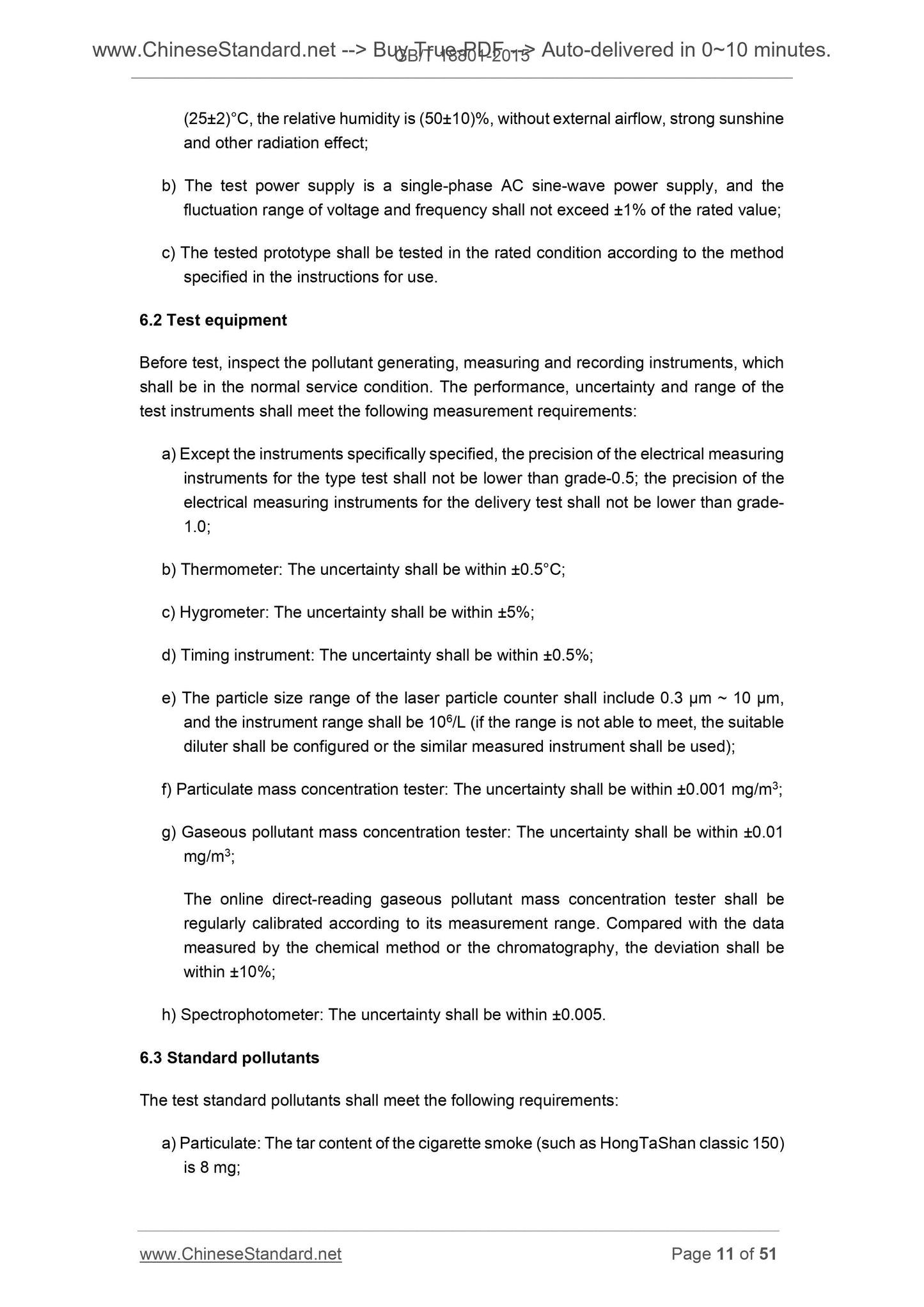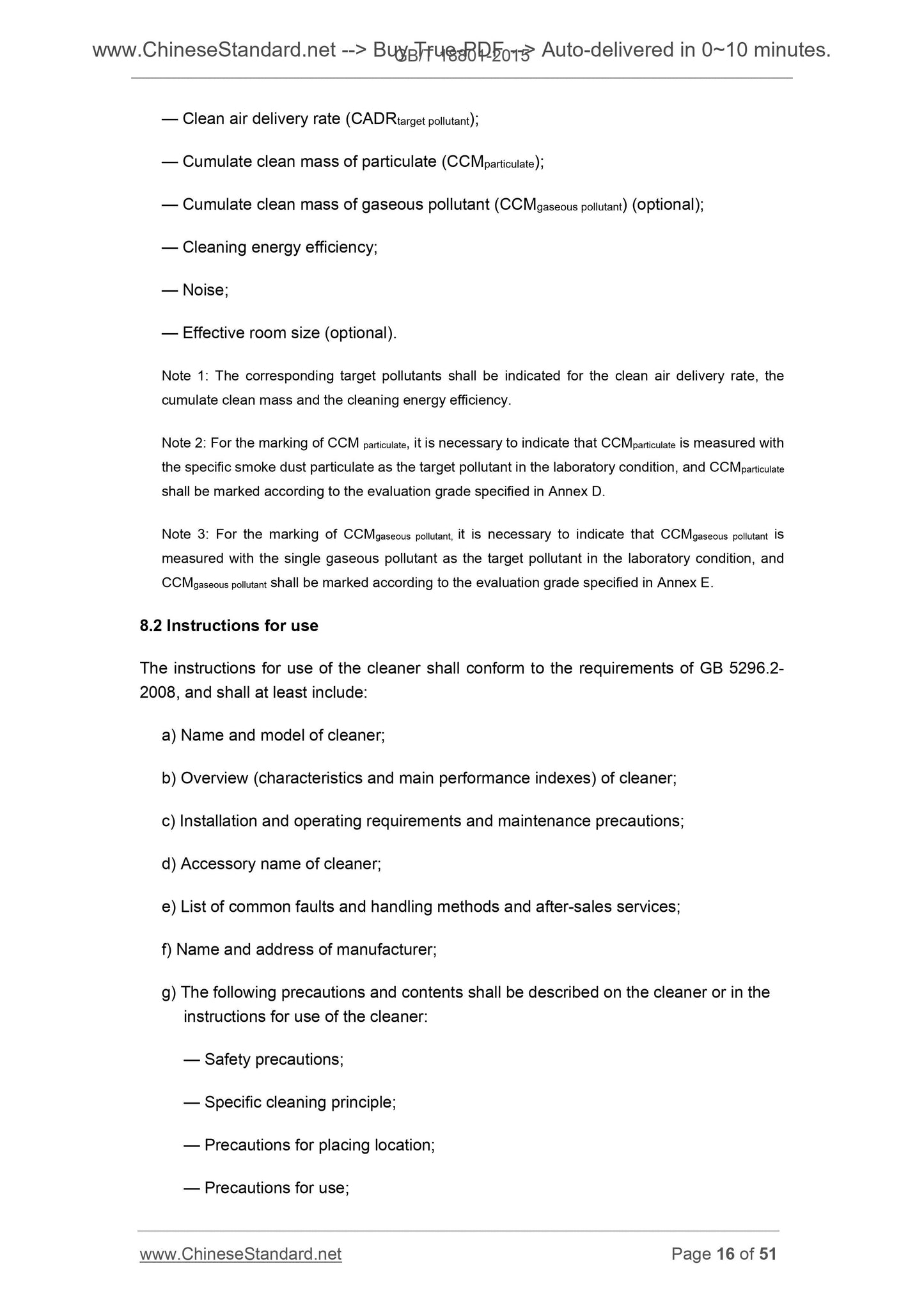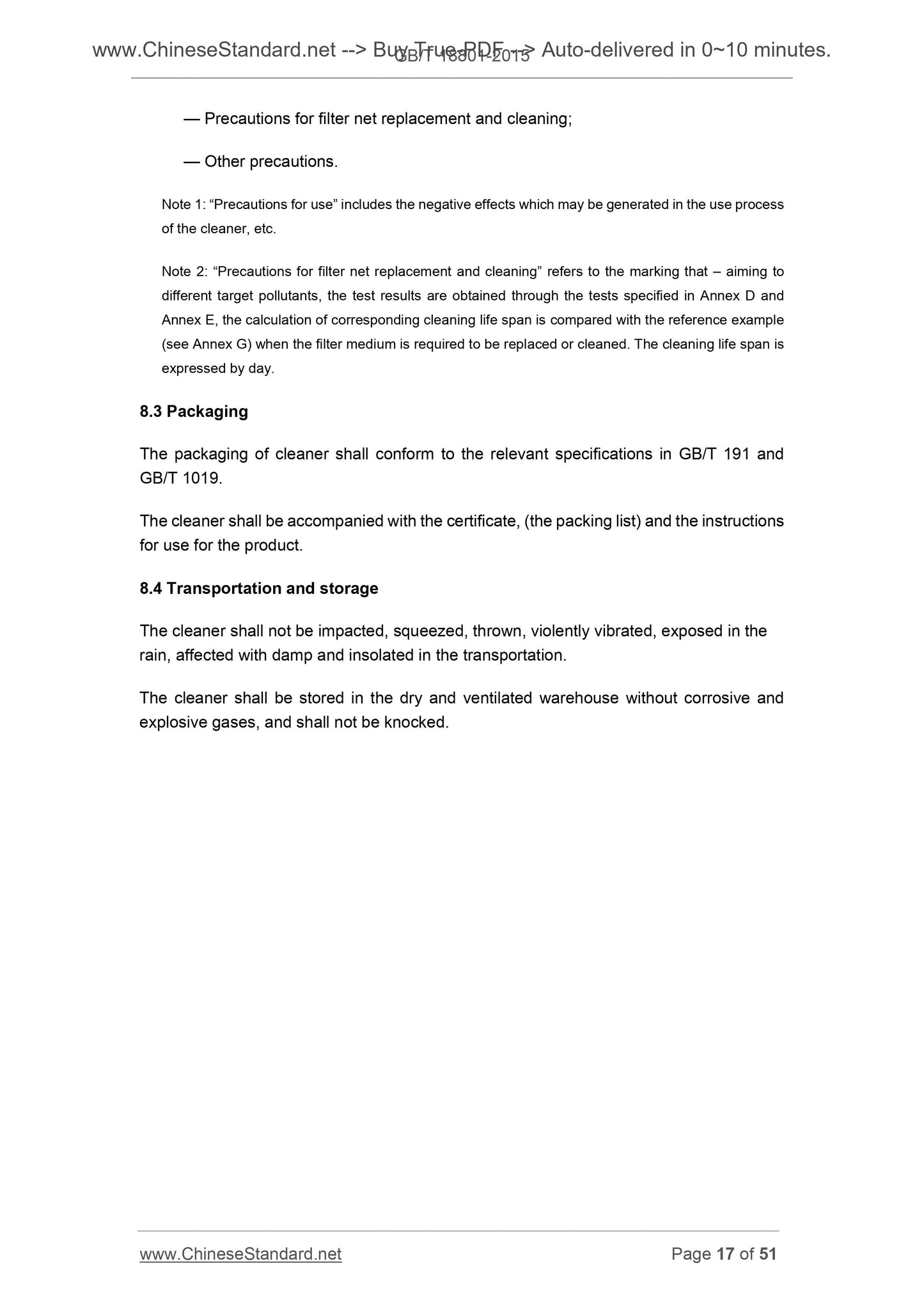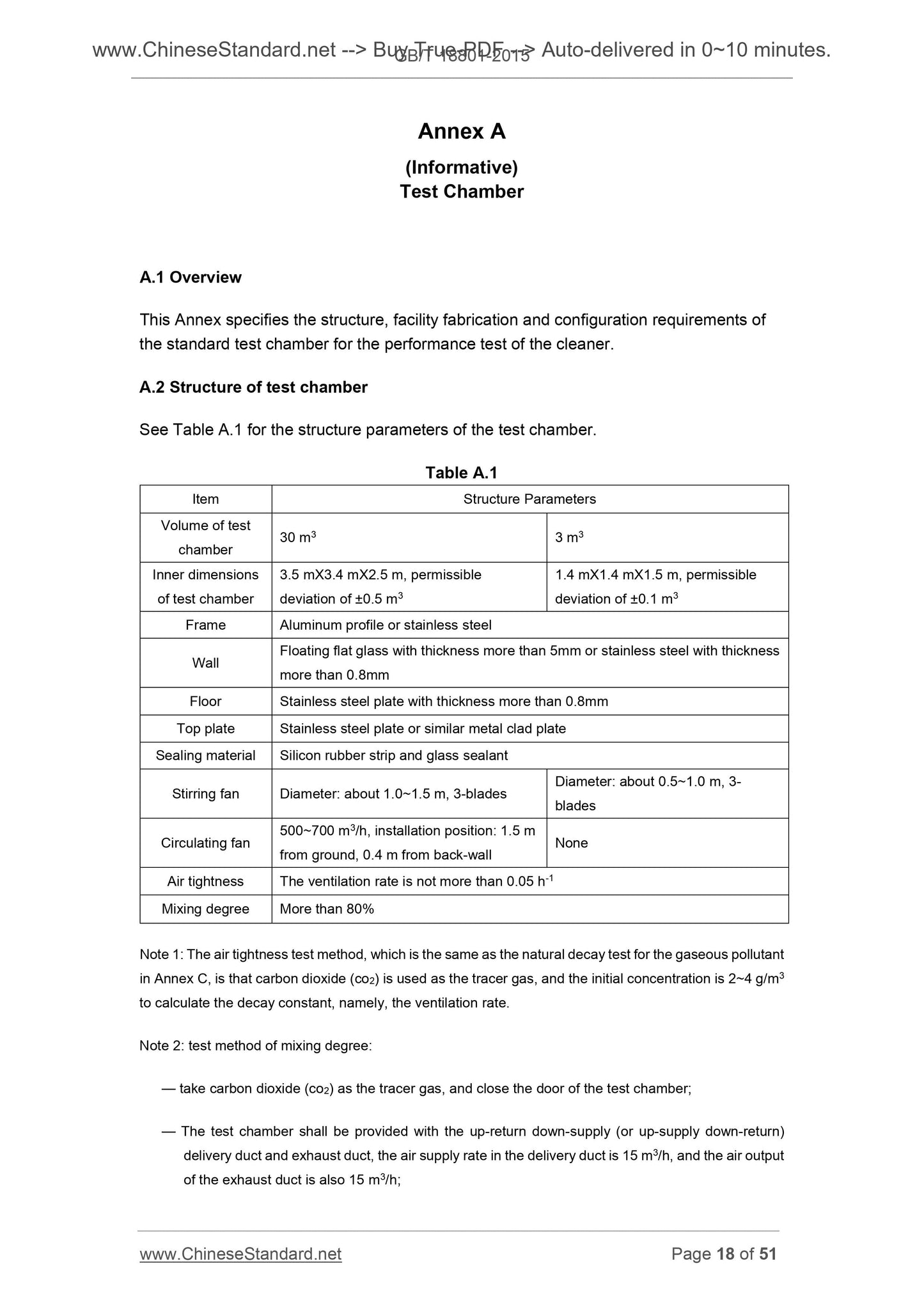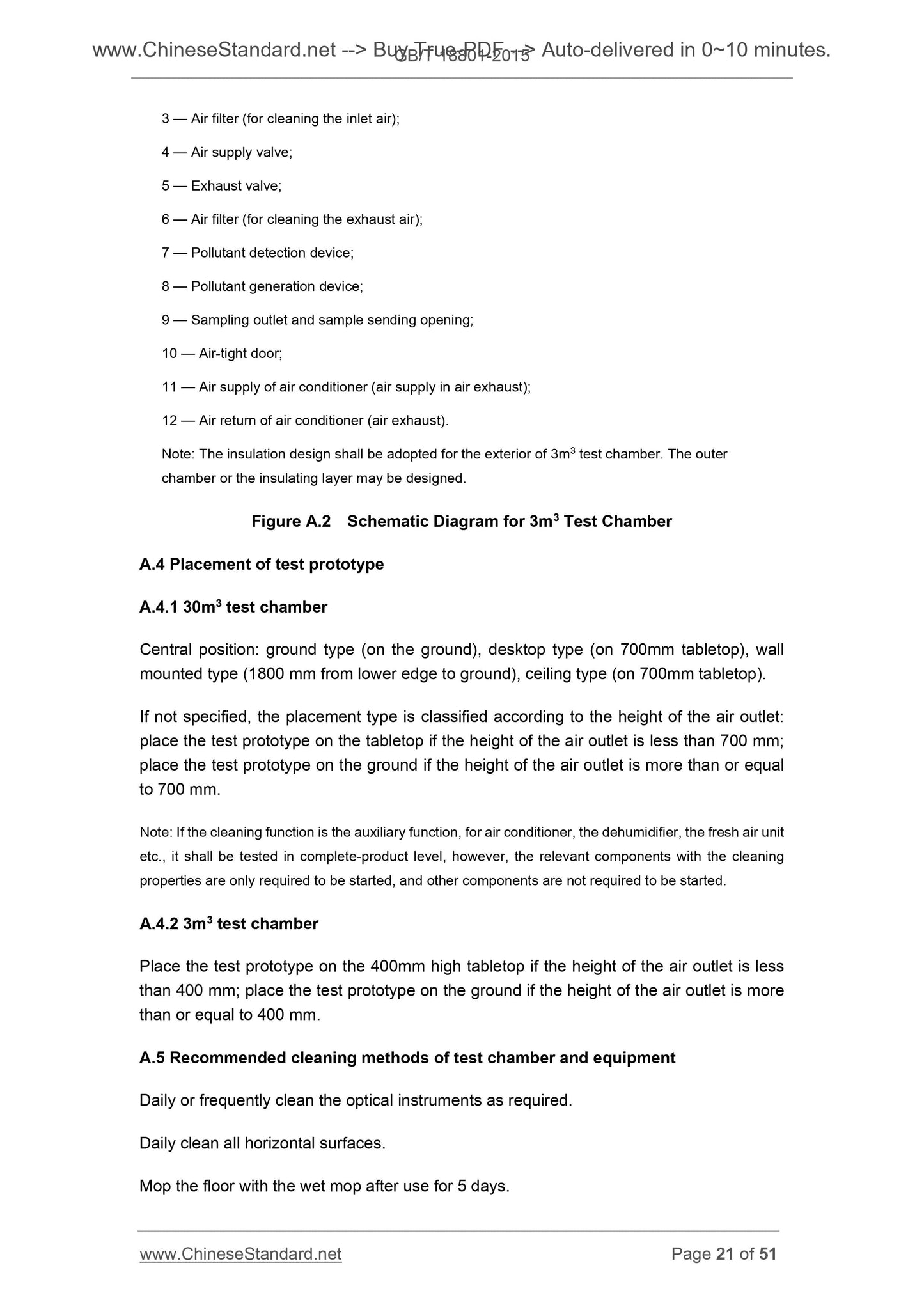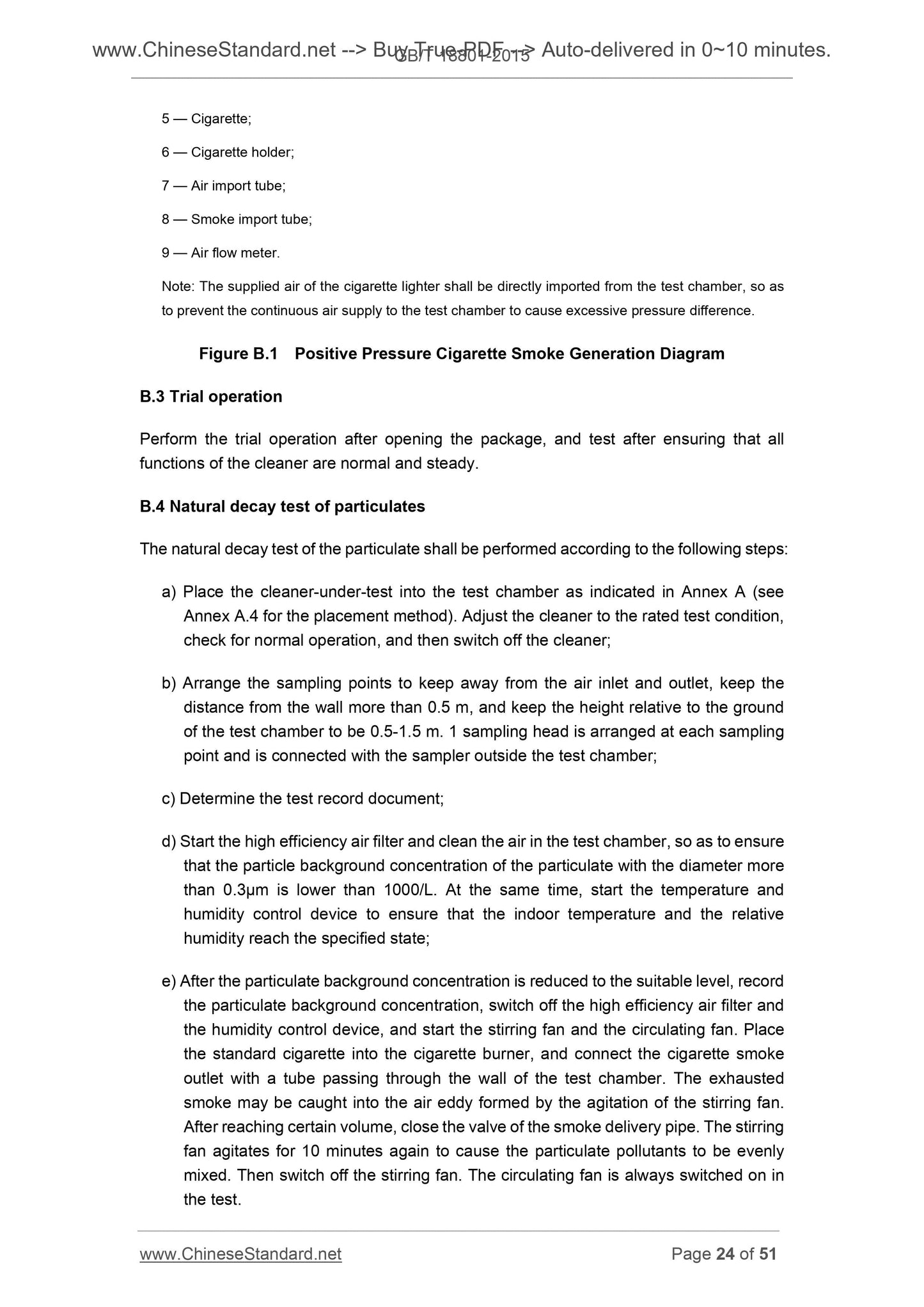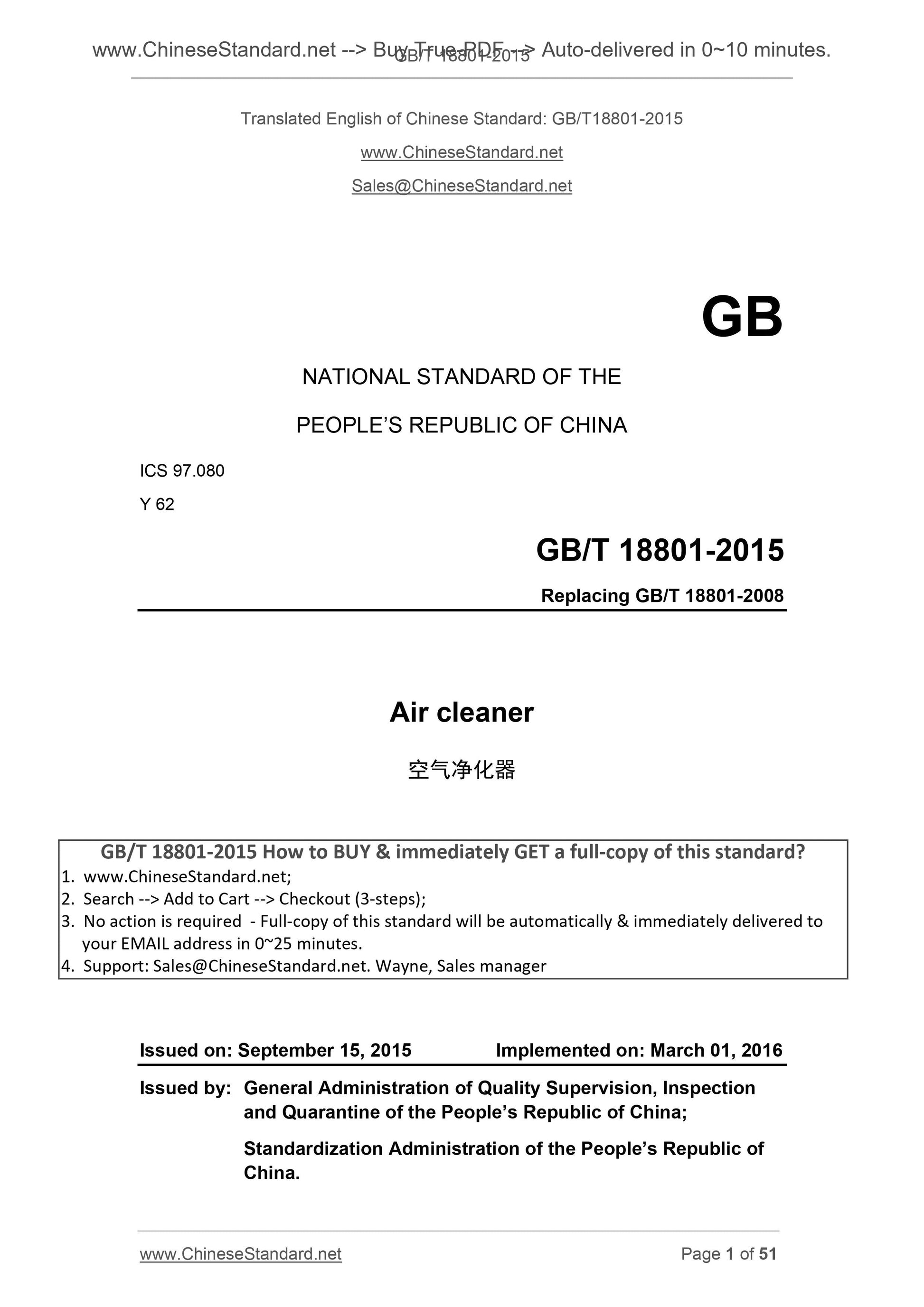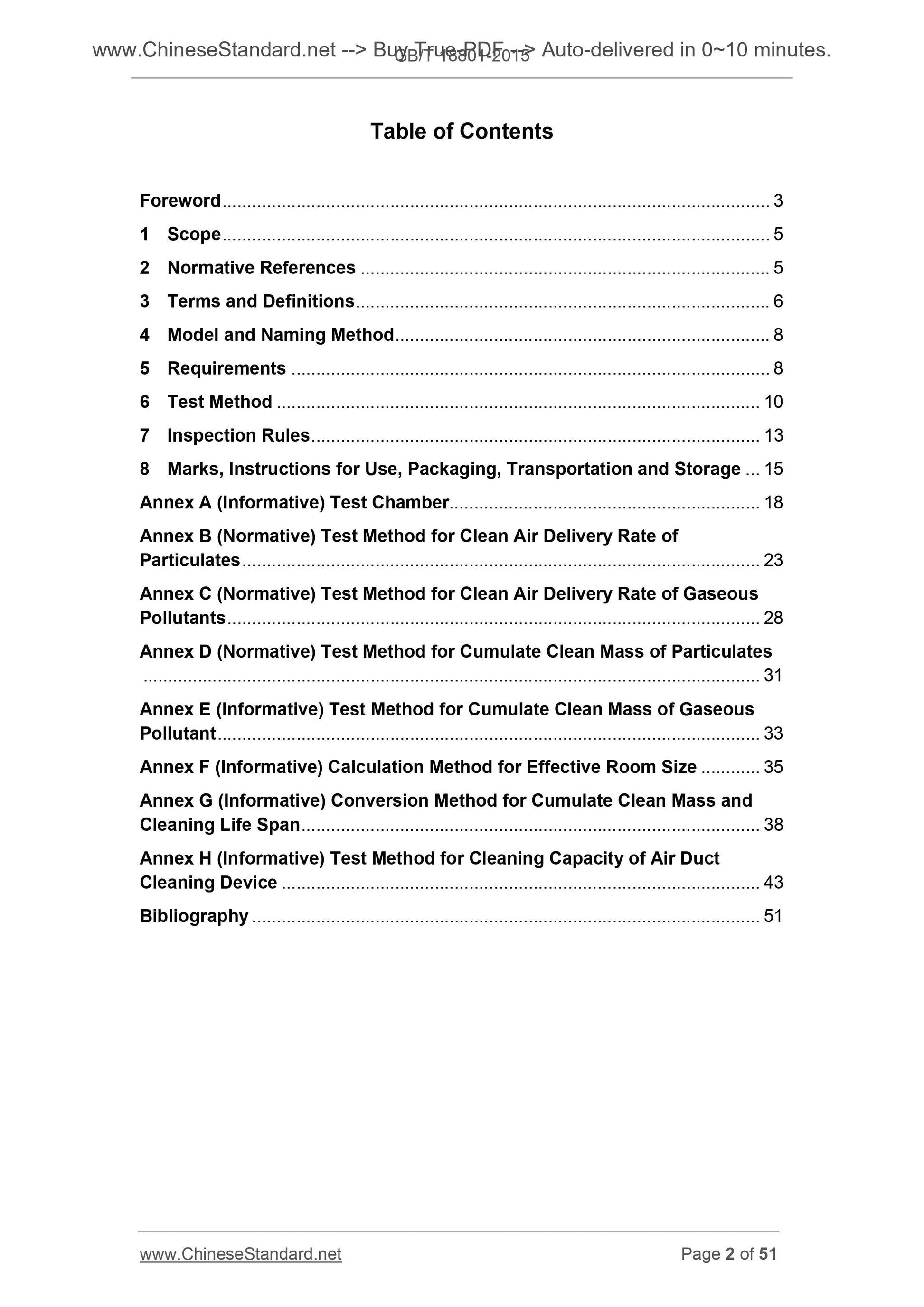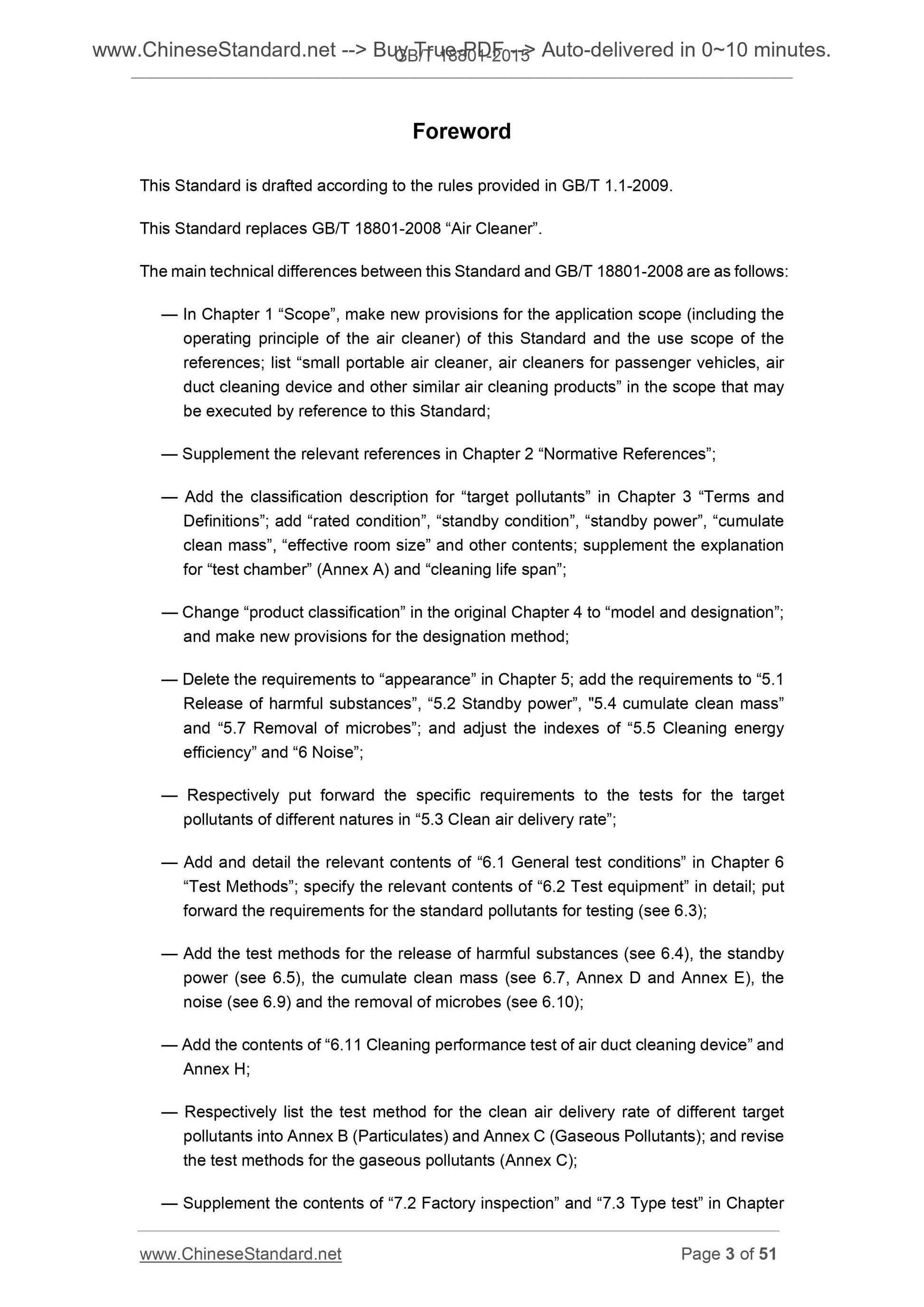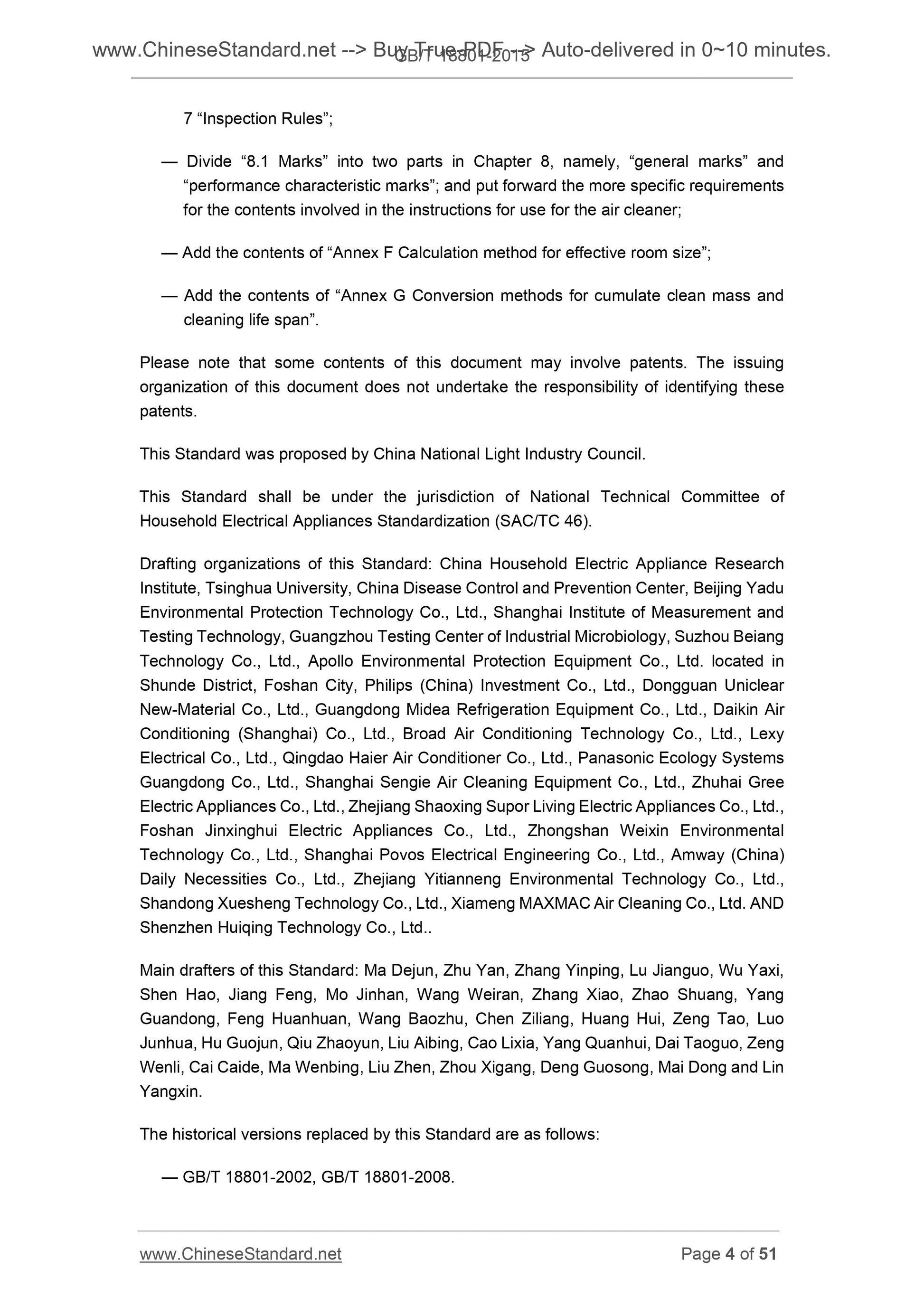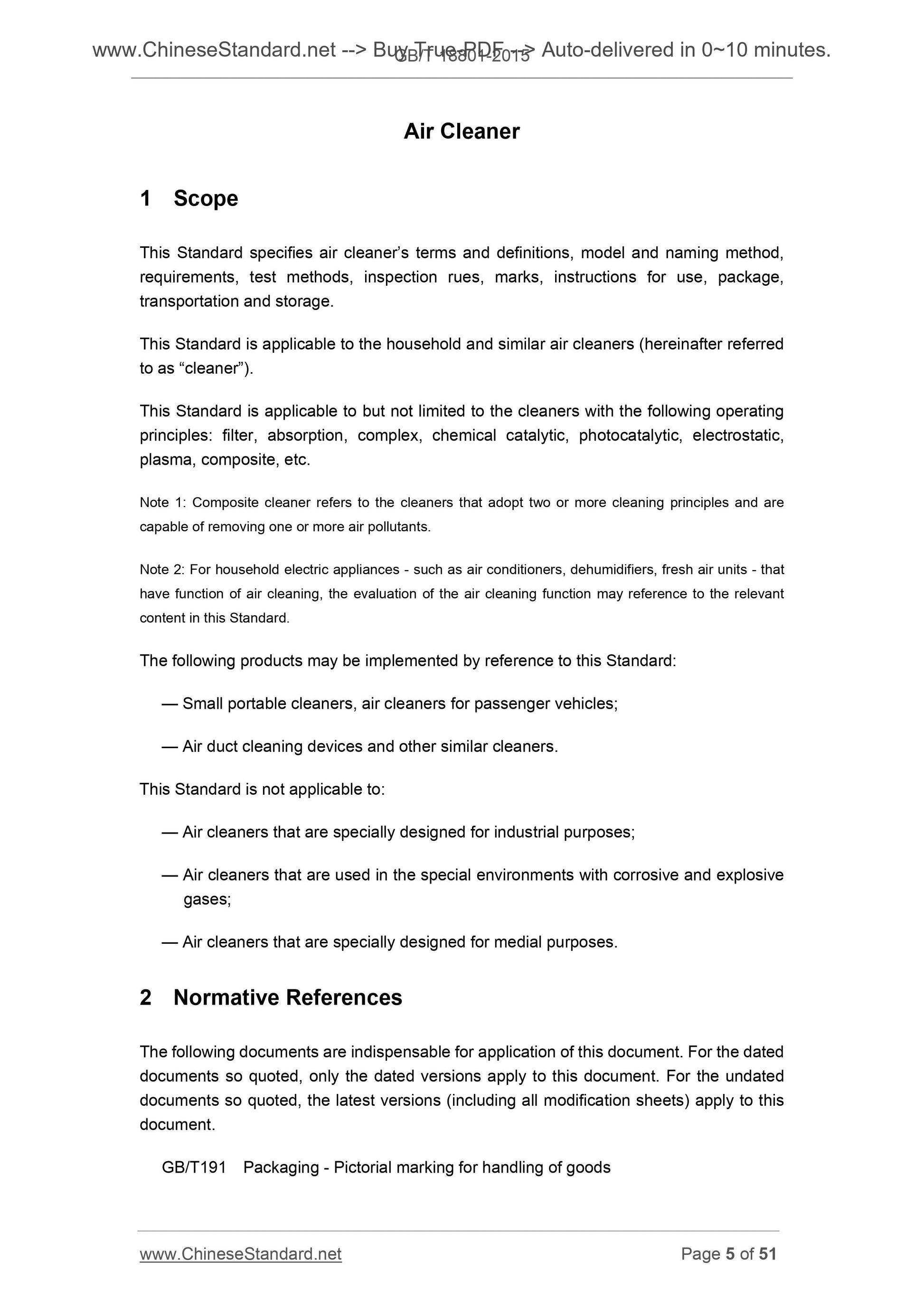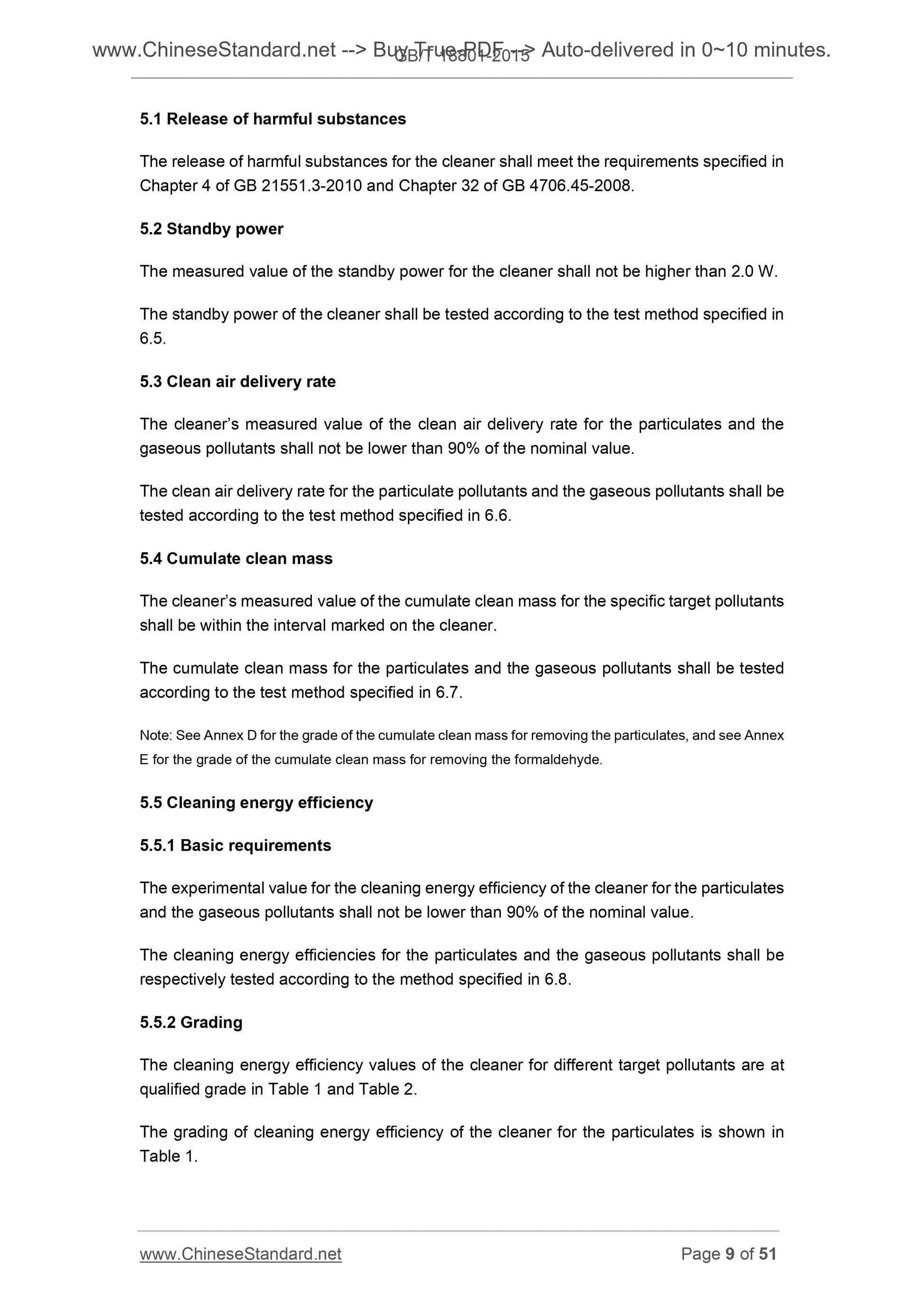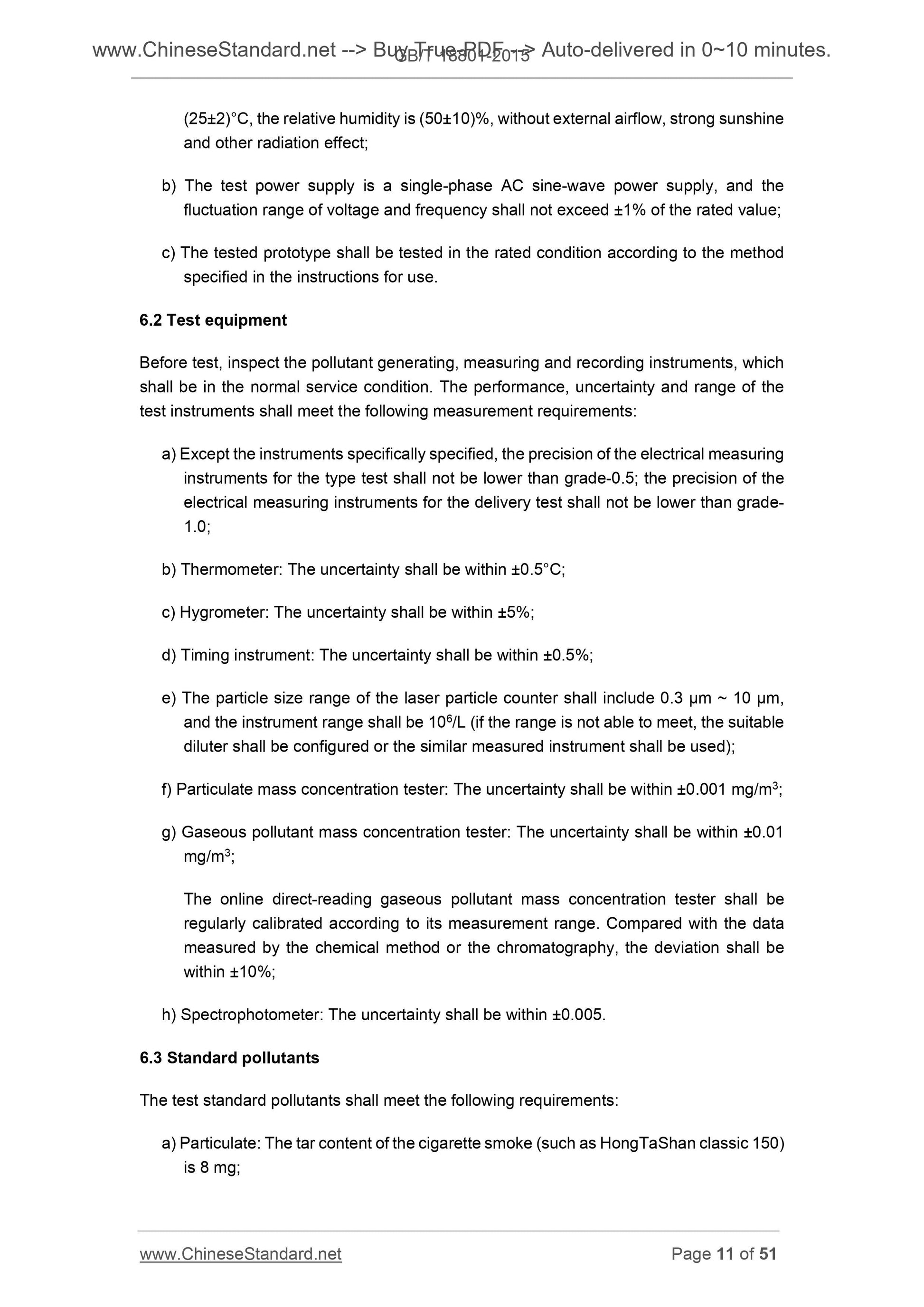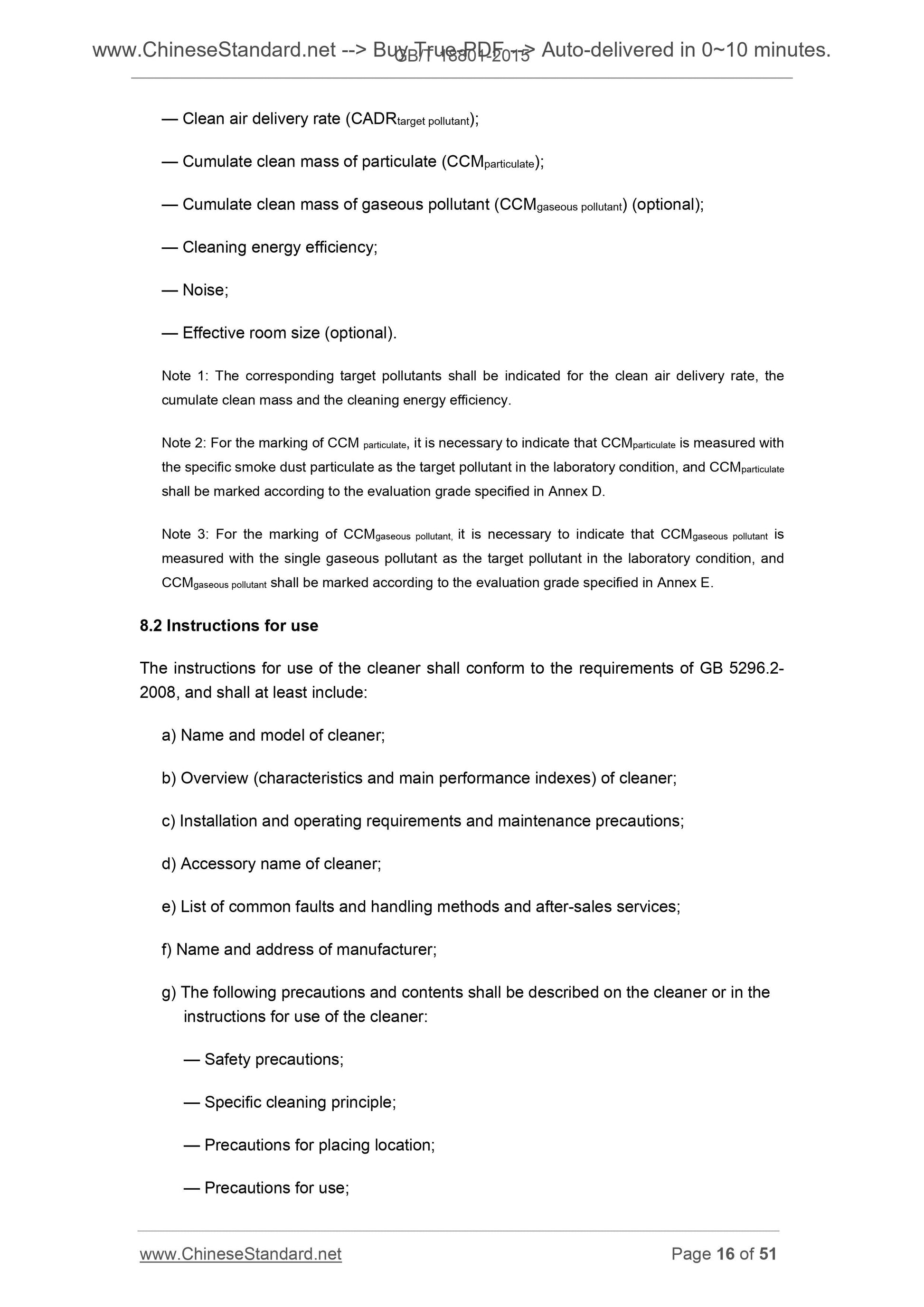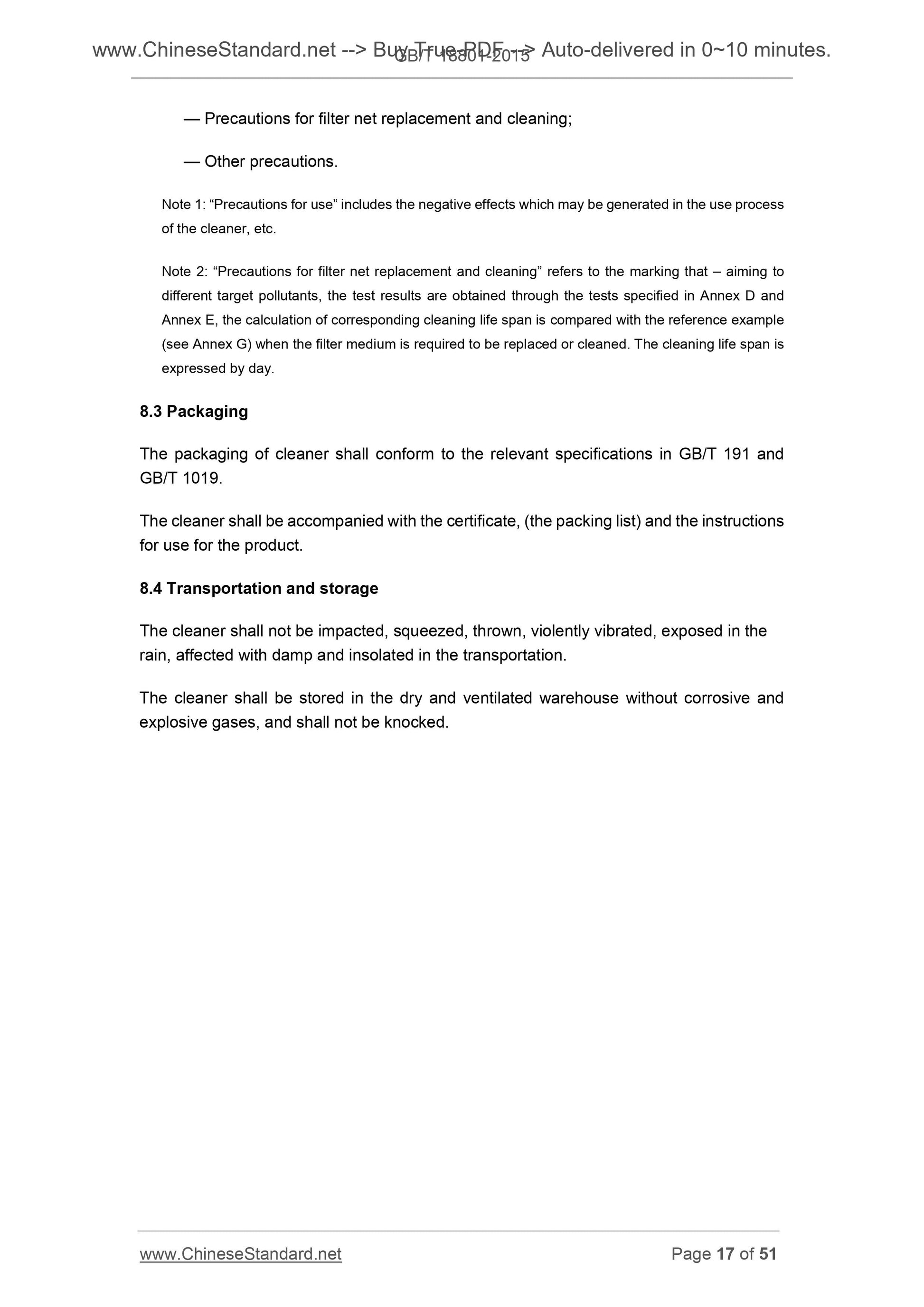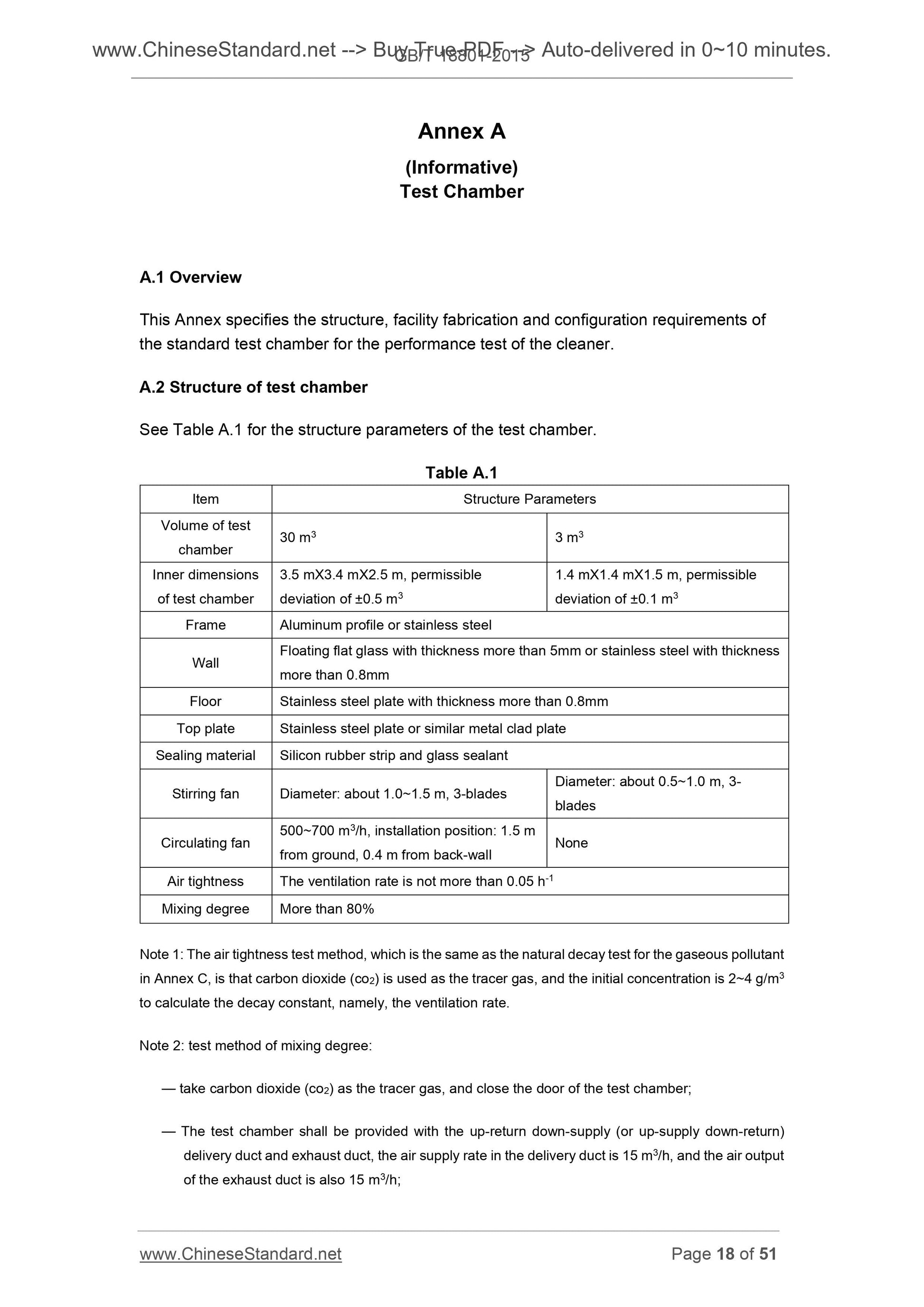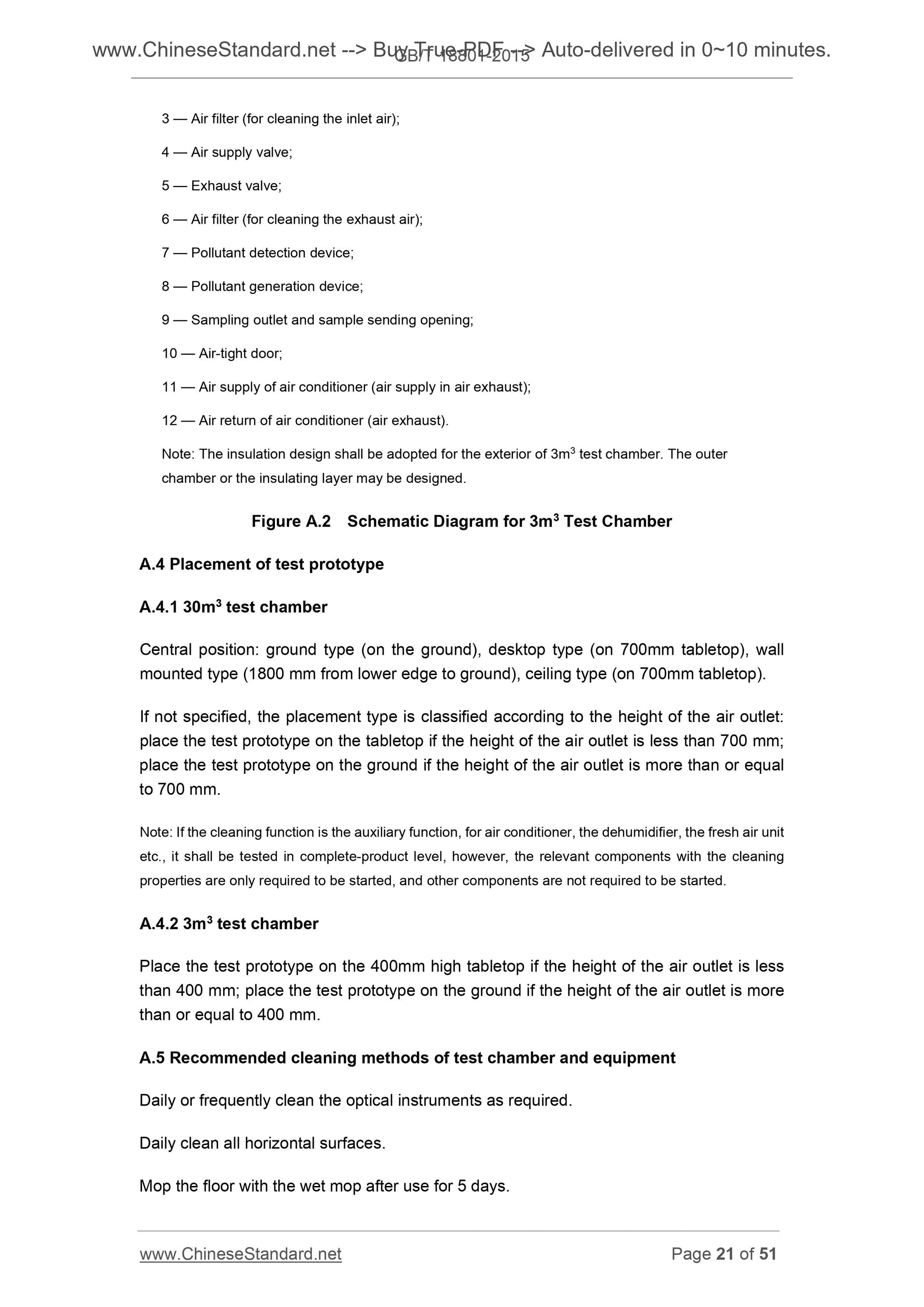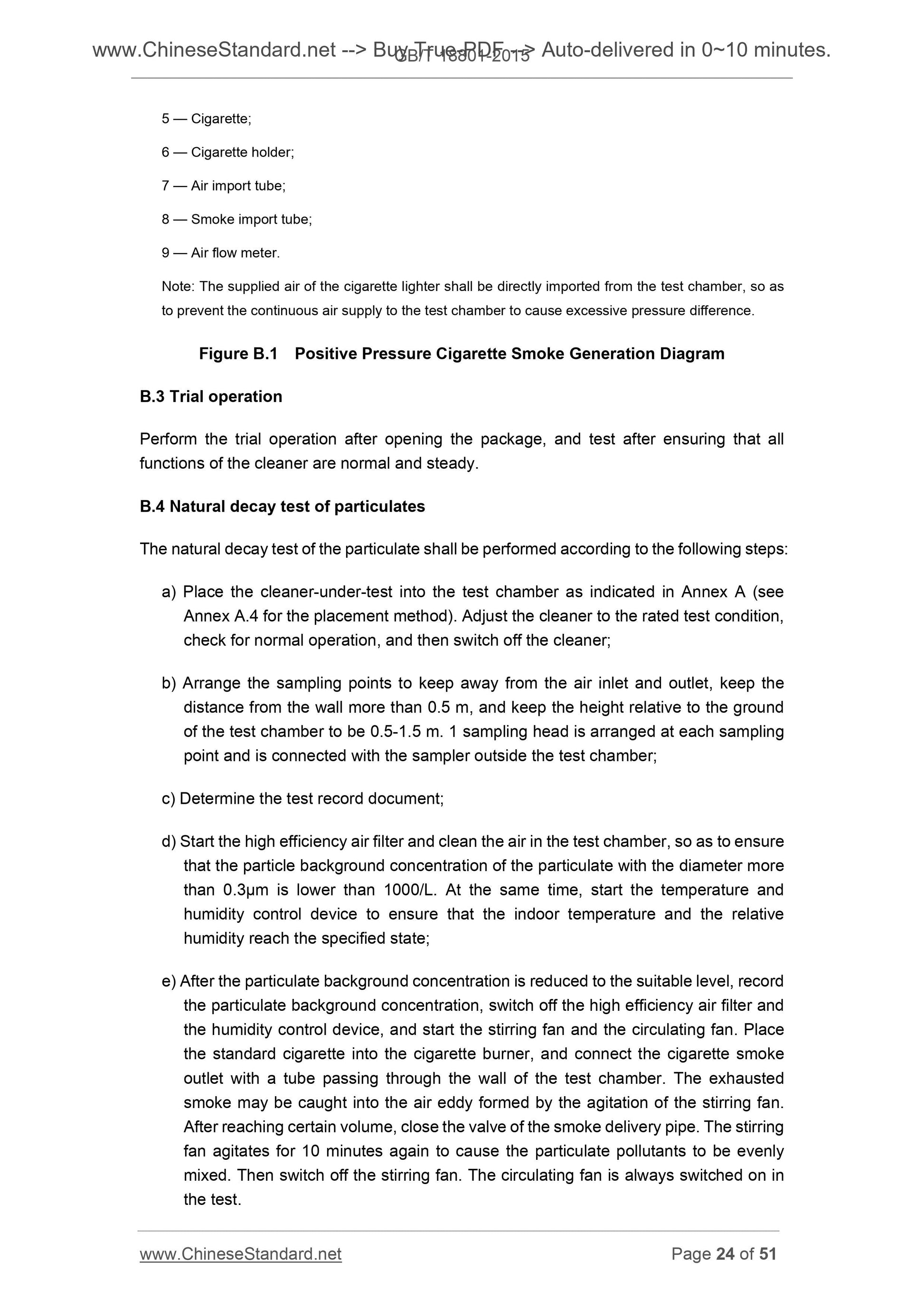1
/
of
12
PayPal, credit cards. Download editable-PDF and invoice in 1 second!
GB/T 18801-2015 English PDF (GB/T18801-2015)
GB/T 18801-2015 English PDF (GB/T18801-2015)
Regular price
$445.00
Regular price
Sale price
$445.00
Unit price
/
per
Shipping calculated at checkout.
Couldn't load pickup availability
GB/T 18801-2015: Air cleaner
Delivery: 9 seconds. Download (and Email) true-PDF + Invoice.Get Quotation: Click GB/T 18801-2015 (Self-service in 1-minute)
Newer / historical versions: GB/T 18801-2015
Preview True-PDF
Scope
This Standard specifies air cleaner’s terms and definitions, model and naming method,requirements, test methods, inspection rules, marks, instructions for use, package,
transportation and storage.
This Standard is applicable to the household and similar air cleaners (hereinafter referred
to as “cleaner”).
This Standard is applicable to but not limited to the cleaners with the following operating
principles. filter, absorption, complex, chemical catalytic, photocatalytic, electrostatic,
plasma, composite, etc.
Note 1. Composite cleaner refers to the cleaners that adopt two or more cleaning principles and are
capable of removing one or more air pollutants.
Note 2. For household electric appliances - such as air conditioners, dehumidifiers, fresh air units - that
have function of air cleaning, the evaluation of the air cleaning function may reference to the relevant
content in this Standard.
The following products may be implemented by reference to this Standard.
— Small portable cleaners, air cleaners for passenger vehicles;
— Air duct cleaning devices and other similar cleaners.
This Standard is not applicable to.
— Air cleaners that are specially designed for industrial purposes;
— Air cleaners that are used in the special environments with corrosive and explosive
gases;
— Air cleaners that are specially designed for medial purposes.
Basic Data
| Standard ID | GB/T 18801-2015 (GB/T18801-2015) |
| Description (Translated English) | Air cleaner |
| Sector / Industry | National Standard (Recommended) |
| Classification of Chinese Standard | Y62 |
| Classification of International Standard | 97.080 |
| Word Count Estimation | 39,350 |
| Date of Issue | 2015-09-15 |
| Date of Implementation | 2016-03-01 |
| Older Standard (superseded by this standard) | GB/T 18801-2008 |
| Quoted Standard | GB/T 191; GB/T 1019; GB/T 2828.1; GB/T 2829; GB/T 4214.1-2000; GB 4706.1; GB 4706.45-2008; GB 5296.2-2008; GB/T 18883; GB 21551.3-2010 |
| Regulation (derived from) | National Standard Announcement 2015 No.26 |
| Issuing agency(ies) | General Administration of Quality Supervision, Inspection and Quarantine of the People's Republic of China, Standardization Administration of the People's Republic of China |
| Summary | This Standard specifies the terms and definitions of the air purifier, model and name, requirements, test methods, inspection rules, marking, instructions for use, packaging, transportation and storage. This Standard applies to household and similar use air purifier (hereinafter referred to as "purification"). This Standard applies to, but not limited to, the following works Purifier: filter, adsorption, complexation formula, chemical catalytic, photocatalytic, electrostatic plasma type, compound and so on. |
Share
